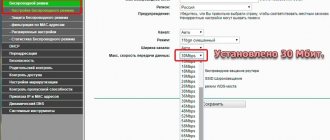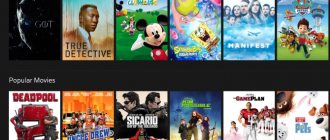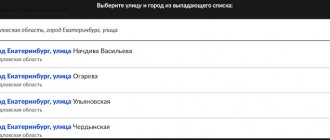Almost every one of our materials about how radio stations work (they are here: , , ) you can find angry comments that modern radio “plays” the same music, which is repeated hour after hour, and in the breaks between boring songs Annoying advertisement plays. In this post we will talk about how the playlist of a modern radio station is built and why the authors of the comments are right, but not entirely.
Photo by Camilo Rueda Lopez
Who's louder?
In vain many people think that it’s only a matter of bitrate. Although few people indicate the bitrate, and even reduce it without our knowledge. Many broadcasters also did not care about the recommendations of the Audio Engineering Society, which stipulate the maximum volume level of the stream stream.
What do we end up with? First, the phonogram was subjected to brutal compression of modern mastering in the style of Loudness War. Then this song is also transmitted with the volume level going off scale, re-clipping the already tortured signal. An example would be a sample of a Deezer stream captured on the fly in digital form.
Deezer radio service abuses volume, which leads to distortion in the DAC
As you can see, despite the rather high bitrate, the volume regularly sticks to 0 dB and causes a lot of distortion associated with clipping. Although they say that Spotify has come to its senses.
Therefore, when considering a new station, we will also pay attention to the dynamic aspect. The primary important selection criterion will be the Lossless audio stream. It should not be processed by the encoder with loss of information, even if it is quite high-quality AAC or 320 kbps. That's why Linn Radio and others like it - sorry, today we're not talking about you!
How songs get on the radio
Now that we have dealt with the formats, it is important to understand how songs are selected for broadcast.
At every radio station there is a person (or often several) who choose whether a particular composition is suitable for broadcast or not. This is the program director, the broadcast producer, and often all the top people who work with the broadcast take part in the “listening” process. That is, contrary to popular belief, a DJ cannot just open a streaming service and launch a song from it that he likes and seems to fit the format of the radio station on the air (although the bravest sometimes do this and often receive rather large fines). Each composition undergoes strict selection and must be approved. In addition, you should remember to respect copyright. The copyright holder must agree to the rotation of the song on the radio station.
There are several key rules that increase the chance of a song getting aired (not everyone follows them, each station has its own selection criteria, but adherence to these points will be a plus during the selection process). Firstly, the composition must be a “potential hit” (which means that neither the number of downloads on the most popular streaming services, nor the millions of views of the video on YouTube, nor successful concert tours make the song “radio”).
It is best if the song is not too long (no more than 4 minutes). If you listen to well-known radio stations, you can observe that even the long songs of the most legendary performers are “cut” at the end.
The peculiarities of constructing a broadcast network generally give short songs more chances; they are very convenient to “plug” holes between the release of advertising or news and the transition to a regional block.
There should be no moments with complete silence in the song, because silence on the air leads to a micro-infarction of the entire radio station. Nobody likes long instrumental intros; it is better for the vocalist to start singing as early as possible, and for the chorus to start no later than the first minute of the song.
Love, money and 24 bit
Currently, a number of audiophile services, for example Tidal, provide access to Hi-Res audio as part of a subscription. But paying for this service is not so easy, while Tidal does not officially work here. We need workarounds, which we’ll talk about some other time. Let's focus on online radio stations that broadcast without restrictions in every sense.
Most lossless radio uses a 16-bit, 44 kHz signal. Well, that's quite reasonable. Most albums are still available in the good old Red Book, and the difference between 16- and 24-bit audio is not so critical compared to sound degradation on lossy codecs. In general, you understand me: on a 16/44 stream, the data density is about megabits per second, and there is no particular reason to increase the traffic by one and a half times.
What does it have to do with the fact that the same songs are played on the radio?
And now, if you compare all this information, the “worn out” playlist is very easy to explain.
Firstly, CHR radio stations (which are most often listened to by young people) are not designed for long-term listening. Due to the strict connection to the charts, the playlist on them is quite meager, and the same songs can be heard within two to three hours. This is normal practice. As for radio stations with a richer music library, even they one day become boring for a regular listener, because any new song, before getting into rotation and becoming a permanent resident of the radio library, goes through many checks and approvals, while the musical “golden fund” radio station remains unchanged. So it turns out that the songs begin to repeat themselves, although new tracks still end up in the playlist.
Some radio stations practice “listening” with the help of their audience (someone offers to choose by voting what should be included in the playlist right on the air, someone gathers a focus group off-air).
And yet, the only advice that can be given to people dreaming of new music on the air is to change the wavelength. At least for a while, or even better, choose several radio stations for yourself and switch between them. It is advisable to expand the format, let it be, for example, CHR, news/talk and jazz.
By the way, special attention should be paid to conversational radio stations - due to the fact that music there does not take up most of the airwaves, it does not get boring so quickly.
PS Digest: 30 materials on the topic of portable Hi-Fi.
How to listen
Resources with lossless streams that we managed to find are in no hurry to announce the coveted link on the main page. Why overload the server if “everyone listens to MP3”? Most likely, you will find an interface player on it with a regular lossy stream, which can automatically reduce the bitrate if the system decides that the transmission channel is too narrow. The links we need to the flac stream can usually be found on specialized forums dedicated to this task. The resulting address should be entered into your own software player that supports http broadcasting - the same foobar2000 or VLC.
Loading the web address of an Internet radio station for streaming via Foobar2000
VLC, by the way, opens up a lot of functionality on portable devices. This is what I will use on my iPhone and iPad. The audio stream for analysis can be captured digitally through the optical output of the docking station, or you can simply save the stream through Foobar2000 into a separate wav file, which is then viewed in an audio editor.
Broadcasting Internet radio on a portable device can be configured using the universal VLC player
Soviet means excellent
Surprisingly, when it comes to lossless streaming, all audiophile genres are blown away by the wind. I was unable to find a single resource with classical music. The old links led to a single Czech site, but for a long time only lossy ones were broadcast there. But fans of electronic music turned out to be conscientious radio listeners. Domestic Internet radio "Sector" offers two FLAC streams - Progressive and Space. However, the designation “electronic music” is quite arbitrary here. In addition to house or trance, there are ethno, minimal acoustic, and chill-out sounds. This is a normal urban musical format. As the graphs of the captured stream show, everything goes without deception or loss of quality. But in terms of volume on both streams, there is still an overlap of more than 1 dB. So clipping is possible on drum rhythms.
Radio “Sector” is an honest lossless spectrum, but the volume of the stream can be too much
Web player links: Sector Space https://89.223.45.5:8000/space-flac, Sector Progressive https://89.223.45.5:8000/progressive-flac
Another local resource, Radio Nina, appears to be run by one person and is most likely a pirate stream. The repertoire is standard mainstream from Doors to Pink. You can listen to the lossless stream only after registration. It is not difficult to repair it yourself, but there is a nuance. Everything will work on Foobar2000, but not on a portable device. In any case, the music did not start on VLC for me, despite the fact that I logged in to the site again. The spectrum of “Radio Nina” is in perfect order, but no one monitors the volume either, and if the track is loud, its peaks will inevitably end up clipping.
Radio “Nina” also has everything fair with the spectrum, but the escalations with volume are even more indecent
Link for web player: https://radionina.ru/streamflac/
Sector
The station's website states that it is the first domestic Hi-Fi Internet radio broadcast using Lossless files, such as FLAC. Currently there are three channels broadcasting music in different genres.
Listen SECTOR Next FLAC →
Listen SECTOR Progressive FLAC →
Listen SECTOR Space FLAC →
Unfortunately, this is where the list of stations known to us that broadcast music in excellent quality ends. However, if you know of other sources, feel free to write to us about them in the comments.
Rarities and deception
In the thematic sections of Internet radio it is always interesting to poke at random (like Senegal/Religious) and fall into another universe. Unfortunately, Senegal doesn't care much about lossless radio. However, they do not really care about it in the more prosperous regions of the planet. The number of detected lossless radio stations can be counted on one hand. In the USA or Japan it is useless to look for free FLAC radio, but in Europe there are still a few.
One of them is JB Radio2. Along with modern music, the station broadcasts a lot of old-school content, while, fortunately, not overusing the hits of Soviet music lovers. On the playlist, Sade sits next to Bob Dylan and Fleetwood Mac. In general, different names come up, including those who were in our shadows, and it’s especially interesting to listen to them.
JB Radio streams a regular lossy stream passed through a 192 kHz upsampler
And it was even more offensive to learn that the source of the JB Radio 2 broadcast was lossy files. The frequency is cut off at 16 kHz, guess what the bitrate was there - guess for yourself. But the height of insanity was that this stuff is transmitted in a container with a resolution of 192 kHz, which greatly loads the channel to more than two megabits per second! That is, an artificially inflated 16-bit/192 kHz audio stream is received, which contains a banal mp3 inside. For comparison, I downloaded the broadcast at 320 kbs, you can compare the quality - there is no difference, except for the channel width. The Greek admin declined to comment on this situation. The only consolation can be the thought that on radio stations the vast majority of music is transferred to MP3, and in this case the phonogram simply avoided the fate of being converted into a lossy stream again.
Web player link : https://209.126.66.166:10999/flac.m3u
How a playlist is built
There is special software for this (for example Power Gold).
After the music library is selected, all music is divided into categories. Each station has its own division, but, as a rule, these are hits, “golden fund”, fast, slow, music for the evening, music for the weekend, music for mourning, night playlist and so on. In the program, you can set playback rules - for example, tracks from which categories can stand next to each other and from which they cannot. For each category, you can also set the time of day for rotation, frequency and other parameters. There are a few more unspoken rules regarding the compatibility of songs on air: you cannot play several songs in a row with male or female vocals (in other words, we dilute boys with girls and vice versa), the “musical picture” must be combined in atmosphere, so it is better to “invigorate” in the morning, and in the evening, to relax, but two songs from these categories placed next to each other are very hard on the ears.
French Kiss
The French radio station L'Eko has quite a physical broadcast frequency of 88.5 MHz in its homeland. There seems to be no exotic repertoire: mainstream pop-rock and hip-hop, but not a single familiar name. The quality analysis showed, alas, that there was a lossy codec in the source. The only difference is that it looks like AAC with a softer filter was used. And the volume is ok without being overloaded. Maybe they read the Mastered for iTunes article?
Web player link: https://91.121.159.124:8000/eko-des-garrigues-max.flac
L'Eko lies about the lossless stream, but doesn't mess around with the volume
Another French Frequence3. And here, too, the frequency is cut off, but every other time. There is a normal track, and then it is cut off, although quite high - at 20 kHz. The volume is prudently stopped at -1.5 dB. And although we don’t actually have clipping in our measurements, it is likely that the audio stream was passed through its own dynamic compressor. The music is mostly faceless Euro-pop.
Frequence3 radio broadcasts both lossless and lossy sources
Web player link: https://hd.stream.frequence3.net/frequence3.flac
The French trio is completed by Sing Sing, which seems to be more oriented towards traditional rock content, although again with regional preferences. The spectrum and volume are okay, but the music will probably only be of interest to Francophones.
Sing Sing has everything in order except for the repertoire
Web Player Link: https://stream.sing-sing.org:8000/singsingFlac
Quality increases north of Germany
And here's 440Hz Radio. It's funny, but the sampling frequency here is not 44 kHz, but 48 kHz. Mouzon is about as diverse as L'Eko's, but the emphasis is on German vocalists: Die Toten Hosen and so on. Listen to those who are interested. As for the length of the spectrum and volume, the broadcast has no problems with this. But 48 kHz of the audio stream indicates that there is still a resampling of the original, which is 44 kHz for a CD. And from an audiophile point of view, this procedure is not so harmless.
“440Hz” radios transmit a lossless audio stream, but with a resolution of 48 kHz
Web player link: https://pop-radio.eu:8080/pop.flac.ogg
Although the website of the Ai-Radio service from the Netherlands looks like an amateurish stylization of a DOS interface, you can easily choose the desired bitrate on it, no one is hiding anything. The music is selected mainly from video game soundtracks, that is, any music: an abstract electronic collage can be followed by an old classic soundtrack. I just wanted to say about honest quality - no extra encoders and compressors, when suddenly I came across a track with obvious signs of MP3 origin. Okay, let's chalk it up to an isolated case. To be fair, it should be said that even on CD collections this happens all the time.
Web player link: https://ai-radio.org/44.flac
Ai Radio generally works fairly with both volume and spectrum
The Norwegian resource Kyber.io, judging by the manga design, specializes in Japanese music. Maybe for some other one, but at least not a single artist could be identified. The musical selection is quite interesting: easy-listening with varying degrees of freakiness. The audio stream appears to be free of mpeg filtering artifacts. In any case, audiochecker did not recognize anything criminal. And the volume does not go beyond the red line. Perhaps this channel will have to be awarded the winner's medal, since the main contender JB Radio 2 was disqualified for deliberately violating doping control.
Web player link: https://r.kyber.io/flac
It’s a shame to complain about the technical characteristics of the Kyber.io resource, and the music is not banal











